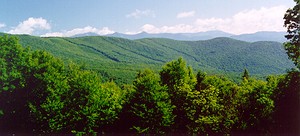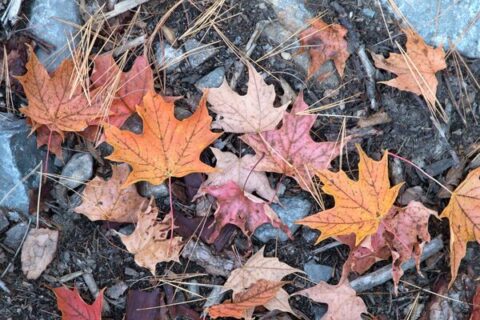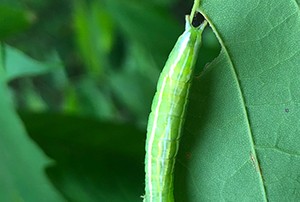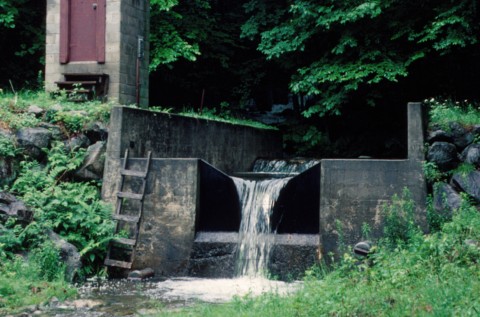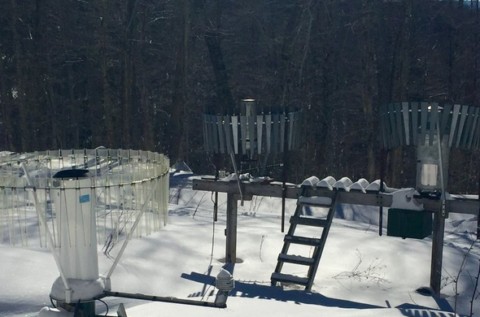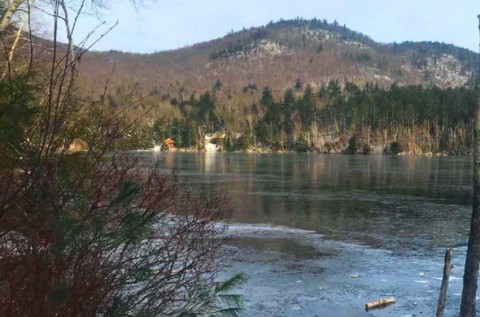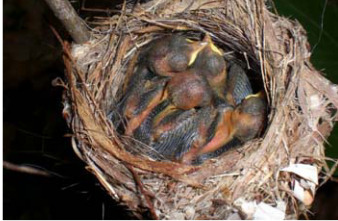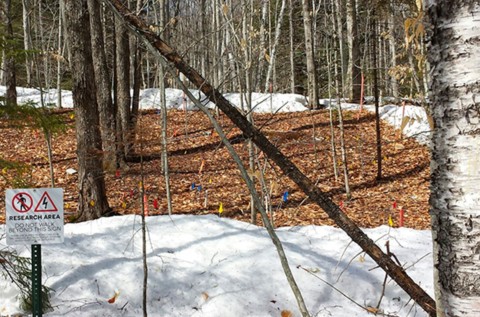K-12 Lessons
WaterViz Lessons
These free, classroom-tested middle school lesson plans engage students of art, music, and science with the water cycle using Hubbard Brook data. They are designed with visually impaired students in mind.
Read MoreIs Forest Management for the Birds?
This five-part lesson explores the impacts of different forest management methods on bird abundance and species diversity. Students compare and contrast the impacts of clearcutting, group selection, and no harvesting on forest succession.
Read MoreIntroduction to Fall Phenology
How has the timing of leaf fall changed over time? Engage your students in tracking leaf coloration and leaf drop in the trees in their backyards or schoolyard.
Read MoreExploring Acid Rain Curriculum
This teaching guide offers content information, classroom lessons, experimental activities, outdoor fieldwork, and data analysis suggestions that will introduce acid rain and build knowledge about the complex interactions between acid rain and ecosystems.
Read MoreHungry Birds Count on Caterpillars
Students will count and identify spiders, caterpillars, and other insects present on the undersides of leaves to get a sense of what food is available to songbirds during the breeding season.
Read MoreGo With the Flow
How does tree removal impact water flowing out of a watershed? Students will graph and analyze Hubbard Brook data to understand this question.
Read MoreSugar Babies
What influences the survival of sugar maple seedlings? Students will use Hubbard brook data to better understand the life cycle of these trees prized for their sweet sap and iconic, colorful foliage.
Read MoreSnowpack Studies
How do snow depth and density correspond with the water equivalent of snowpack? Students will examine Hubbard Brook snow depth data and then develop their own methods for conducting a similar study at their schools in wintertime.
Read MoreTracking Climate Change – Lake Ice Cover
How does climate change affect lake ecology? Students will graph and analyze 50 years of ice cover data collected at Mirror Lake, NH.
Read MoreIs Forest Management for the Birds?
How do different forest management practices affect bird abundance and species diversity? Students will analyze data on different harvesting practices and impacts on migratory birds.
Read MorePlasticine Caterpillar Experiment
Students will create model caterpillars and temporarily attach them to vegetation to investigate predation by birds, small mammals, and invertebrates.
Read MoreMigratory Bird Lesson: Population Ecology Module
This lesson combines text, images, video, and data to teach about avian ecology and reproductive strategies of the Black-throated Blue Warbler.
Read MoreMigratory Bird Lesson: Message in a Song
Students will read a published account of bird research and learn to identify the hypotheses and study design described in the article.
Read MoreMigratory Bird Lesson: Hunt and Peck
Students will identify arthropods along a transect line, and graph and analyze data to learn about the food available to neotropical migratory bird species.
Read MoreLesson: Colder Soils in a Warmer World
How does less snow impact soil temperature? Students will graph and analyze snow depth and soil frost data to explore how a decrease in snowpack might affect forest floor dynamics.
Read MoreLesson: the Birds of Hubbard Brook Data Nugget
Students will learn how to organize and interpret real, messy, scientific data from Hubbard Brook’s long-term migratory bird surveys.
Read MoreLesson: Learning Lichens
In a series of four lessons, students will study lichen ecology and learn about lichen as a bioindicator of air quality and old growth habitat.
Read MoreLesson: Moose Power
What do moose require in terms of energy and nutrition? Students will mimic moose browsing patterns in the forest and investigate the impact of browsing on shrub structure and bird nest siting.
Read MoreMigratory Bird Lesson: Birds Fly from Here to Where?
Students will learn the basics of neotropical bird migration, sketch migratory flyways, and learn how researchers study this complex phenomenon.
Read MoreMigratory Bird Lesson: Getting to Know You
This introductory lesson to New England’s migratory birds features four species found in our region: American Redstart, Bicknell’s Thrush, Black‐throated Blue Warbler, and Blackpoll Warbler.
Read More

